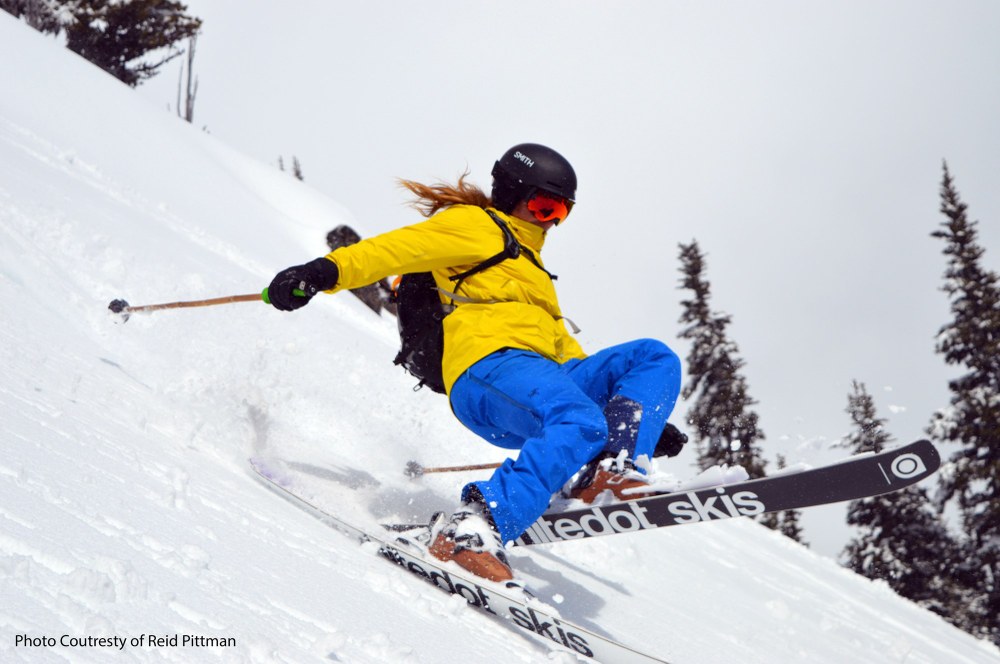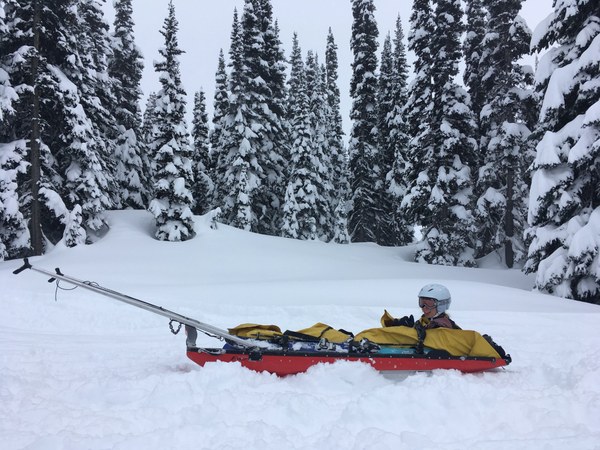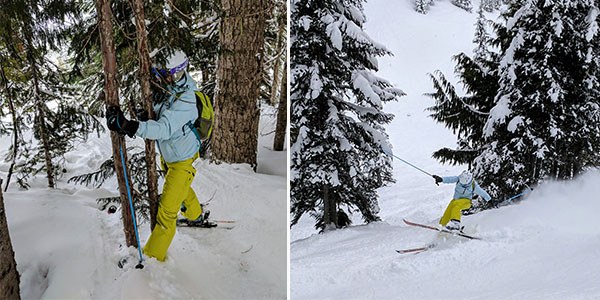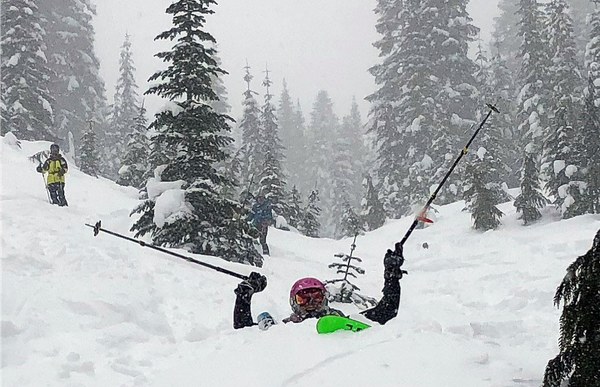
So you want to shred some gnar. Welcome. And congratulations on your willingness to look silly as a grown-up in the pursuit of a new skill. Many of your friends have likely been skiing since they were kids, and have no idea what it’s like to learn as an adult. They forget that white-knuckling your way down a ski slope with a waistband full of snow isn’t always stoke-inducing. So here’s a guide from another new skier based on my first season - tools I found useful, things I wish I’d known, and why you should accept and enjoy being an awful skier.
Learn how to fall and get back up
Falling and getting back up is going to be frequent, and is one of the ways you’re most likely to become injured. Find out how to do it in a way that puts yourself and others at the least amount of risk. These skills will be more relevant to you than to experienced skiers - like taking a controlled fall when you’re going too fast (and haven’t mastered breaking yet), or getting skis back on your feet, in powder, after you somehow popped them off again. This toolkit will help prevent you from getting run over by someone else who also doesn’t know what they’re doing.
Adjusting how you think about falling is also helpful. I saw eating it as an unavoidable component of the learning process, not an indication that I was doing things wrong or that I was bad at learning. This helped me to not only be willing to keep trying, but have a good time while doing it. Adopting a sense of humor about it will do wonders as well.
 A ski crash gone wrong. Courtesy of Katie Love.
A ski crash gone wrong. Courtesy of Katie Love.
Abandon ego and allow yourself to crash
You won’t look good on the ski slope. Reconcile yourself with this. You attached giant, slippery sticks to your feet - it’s okay to look like the Three Stooges on skis. Trying to save face will only slow down your learning process and make it all a lot less fun, so you may as well give up on style and have a good time instead.
I once had someone tell me that they hadn’t seen anyone crash as much as me - they were probably right. This was because it was my first day on skis and I was being thrown down a hill way beyond my skill level, but by the end I was able to limp through it. If I’d stayed on the bunny slope and hadn’t allowed myself to fall, my progression would have been minimal and I probably would’ve gone home disheartened and bored. I wouldn’t recommend trial by fire for everyone, but pushing your boundaries is important for meaningful progress.
Grab used gear (and bibs!)
We all know that used gear is a great way to access a new sport, but remember to utilize Facebook groups, Mountaineers Gear Grabs, friends of friends, and Craigslist for ski equipment. If it’s your first season, you probably don’t need high-performance gear – just something that will keep you mostly dry. Secondhand gear is also great because it’s an inexpensive way to try out different styles and layering systems.
If possible, get yourself a pair of bibs as well. Even if you tuck everything as securely as possible, your jacket will get pulled up and snow is going to cram itself into places that would rather stay dry. Your friends will likely have lighter-weight gear that breathes well, especially for spring skiing… this is not for you.
Learning how your gear works is also a good idea. Yes, those weird straps and bungee cords exist for a reason – find out why. My first time skiing I didn’t ask for help with gear (because I was already asking for help with everything else) and when I crashed, I was immediately crammed full of snow. Five minutes of ego swallowing with friends will save you six hours of being soggy and cold.
 Photos courtesy of Dennis Kiilerich
Photos courtesy of Dennis Kiilerich
Control your learning process
If you’re out with friends that have been skiing for a long time, they’ll probably offer suggestions on what can help you improve. Don’t allow yourself to be flooded with suggestions; identify a couple friends who explain things in a way you understand, then have them offer one or two things to work on at a time. If you’re attempting to introduce four or five new concepts at once, or have multiple people explaining things, you’ll perform poorly and be frustrated.
And when you’re learning those new skills, don’t let someone continue to offer input while you’re trying to perform a movement. If they keep telling you to lean forward while you’re already trying to lean forward, you just suck at it, you’re going to stop having fun. Identify what your learning style is, determine the best way to meet your needs, and become comfortable communicating that to your friends and ski partners.
I realized that my stoke-inducing ski partners, while meaning well, were not helpful in getting me down the mountain. Telling me I could do it did not, unfortunately, actually increase my ability to do it. While encouragement works wonders for some people, I did best with friends who were analytical and explained movement in precise terms. Understanding what works best for my brain and utilizing those tools allowed me to progress much faster than I would’ve otherwise.
Take lessons and scope out your ski instructor
The idea that instructors only need to “teach to their level” is common at resorts, and it can result in an instructor that isn’t able to analyze your movements or offer multiple ways of trying something. And even if they’re skilled, not everyone is a natural teacher. A friend who was an excellent skier and had been an instructor to fund ski bum dreams turned out to be totally useless in helping me learn.
Look into who your potential instructor is, and chat with them about their experience skiing and motivation for instructing. Consider their teaching style and whether or not that works for you. Get recommendations from friends if you can. Taking lessons with someone who can look at how you move and offer targeted, insightful advice will make a difference.
 Photo courtesy of Nikki Brown
Photo courtesy of Nikki Brown
Mountaineers Resources
Member Benefits
Your member benefits are a great way to save while also investing in some quality goods. As a member, you’re eligible to get 10% off hardgoods and 15% off apparel and accessories at both Skis.com and Snowboards.com. This is in addition to discounts from Outdoor Research, Sherpa Adventure Gear, and more.
Mountaineers Lodges
Our Baker, Stevens, and Meany lodges are excellent places to stay in the winter when you want to be close to the mountain. Meany Lodge also offers a snow sports school for skiing and snowboarding. If you want to learn how to ski in a beautiful location with quality instructors, this is the place to do it.
This article originally appeared in our Winter 2020 issue of Mountaineer Magazine. To view the original article in magazine form and read more stories from our publication, click here.
 Hailey Oppelt
Hailey Oppelt